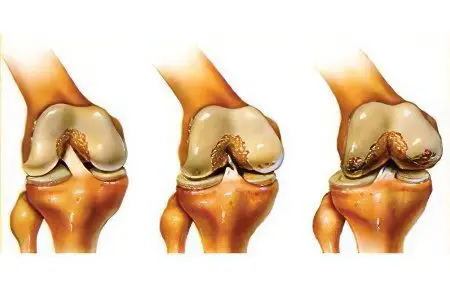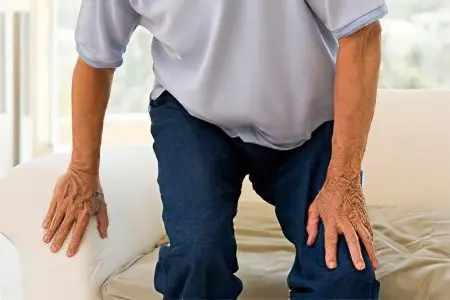Arthritis and arthrosis, or osteoarthritis, are completely different diseases. They are different even in spite of the fact that they seem very similar to each other, and their symptoms in some cases may coincide. You will learn about the main differences between arthritis and arthrosis later in our article.
Causes of arthritis and arthrosis
In arthritis, the basis of pathogenesis is inflammation of the joints, which can result from:
Infections;
Rheumatism;
Allergic or autoimmune reaction.
Arthritis also manifests itself against the background of various injuries or destabilization of metabolic processes (for example, gout). Arthritis can be part of some other ailments (such as systemic inflammatory diseases, connective tissue problems or vasculitis, to name a few).
Arthrosis is not characterized by inflammatory origin. Its occurrence is associated with destructive changes in the joint itself, as well as in cartilage tissue. The most common causes of arthrosis include excessive stress on the joint (most often, it is overweight) and banal tissue wear with age. Also, injuries, destabilization of blood supply and metabolism in the joint can lead to arthrosis.
Between themselves, arthrosis is divided into primary, which are characterized by a violation of the restoration of cartilage cells due to poor blood supply, and secondary, which are formed against the background of an already existing lesion, for example, trauma.
Age factor

Osteoarthritis is a common ailment among older and older people. This is explained by the fact that by the age of 60 almost any person can detect minimal degenerative changes in the articular tissues.
The following fall into the special risk category:
People whose activities are directly related to constant overload of the joints, for example, with a long stay in an almost immobile standing or sitting position, as well as with professional sports;
Those who are overweight and have various metabolic disorders.
Arthritis usually develops at a much younger age. We are talking about a period of approximately 35 to 50 years. In the youngest, including children, acute processes are most often formed. We are talking about purulent, allergic and reactive arthritis. In this case, the disease is characterized by a rapid course and a good prognosis of recovery with timely treatment.
In older people, arthritis is most often formed against the background of arthrosis and can take a protracted, often relapsing character.
Course of the disease
Arthritis can be characterized not only by acute, but also by chronic course. Moreover, if an acute process is formed, subsequent compensation of all destructive changes that have occurred in the tissues of the joint is likely. If the course of the disease is chronic, then the disease eventually provokes irreversible changes in the joint, up to the complete loss of its performance.
The rate at which irreversible changes develop depends on:
Causes of damage to the joint;
The frequency of exacerbations;
The age of the person.
Arthrosis is always a chronic disease. Having begun to appear, changes in the joint area will not disappear anywhere and will systematically lead a person to disability. The only method that makes it possible to slow down the course of the disease should be considered the timely initiated process of supporting and restoring cartilage tissue. We are talking about chondroprotectors, vitamin complexes, herbal remedies and other means. It is also necessary to follow medical recommendations (correct excess weight and follow a diet).
symptomatology

Arthritis occurs most often acutely, but arthrosis is formed gradually, slowly gaining momentum. It is with this that difficulties are associated with the timely diagnosis of osteoarthritis. Due to delays in diagnosis and initiation of therapy, irreversible changes in the tissues of the joints usually have time to develop.
The manifestations of arthritis are always more obvious. It can be intense swelling, unexpected pain, almost complete restriction of movement in the joint. In addition, in the case of arthritis, sharp pains appear at the very beginning of the disease and require the appointment of painkillers at the earliest stages. Pain in arthrosis is usually aching in nature, it develops gradually and is directly dependent on how pronounced degenerative changes in tissues are.
Edema in the case of arthritis is most often sharply marked, and in osteoarthritis it only appears when inflammation joins. Also, in the case of arthritis, reddening of the skin over the joint that has undergone inflammation often occurs.
Arthritis, unlike arthrosis, is accompanied by such signs of intoxication as:
Increase in body temperature;
Feeling of “ache” in the muscles and joints;
Headache.
For arthrosis, the formation of the so-called “articular mice”, which are necrotic bone fragments in the articular cavity, is characteristic. This may be associated with the appearance of serious pain and a feeling of “jamming of the joint.” The second occurs when these fragments are sandwiched between the articular surfaces.
Video: arthritis and arthrosis – what’s the difference? Doctor Evdokimenko answers:









